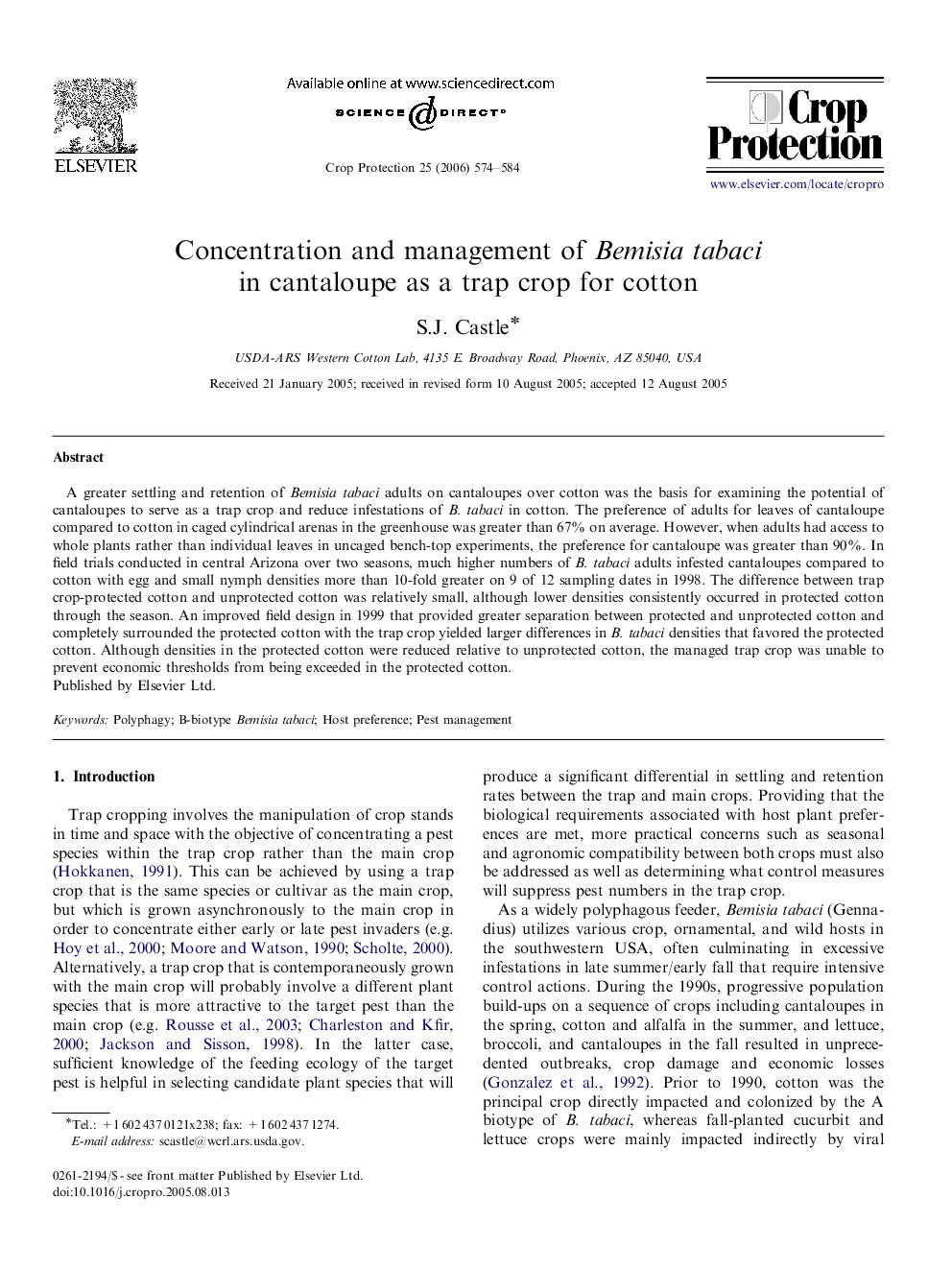| Article ID | Journal | Published Year | Pages | File Type |
|---|---|---|---|---|
| 4508107 | Crop Protection | 2006 | 11 Pages |
Abstract
A greater settling and retention of Bemisia tabaci adults on cantaloupes over cotton was the basis for examining the potential of cantaloupes to serve as a trap crop and reduce infestations of B. tabaci in cotton. The preference of adults for leaves of cantaloupe compared to cotton in caged cylindrical arenas in the greenhouse was greater than 67% on average. However, when adults had access to whole plants rather than individual leaves in uncaged bench-top experiments, the preference for cantaloupe was greater than 90%. In field trials conducted in central Arizona over two seasons, much higher numbers of B. tabaci adults infested cantaloupes compared to cotton with egg and small nymph densities more than 10-fold greater on 9 of 12 sampling dates in 1998. The difference between trap crop-protected cotton and unprotected cotton was relatively small, although lower densities consistently occurred in protected cotton through the season. An improved field design in 1999 that provided greater separation between protected and unprotected cotton and completely surrounded the protected cotton with the trap crop yielded larger differences in B. tabaci densities that favored the protected cotton. Although densities in the protected cotton were reduced relative to unprotected cotton, the managed trap crop was unable to prevent economic thresholds from being exceeded in the protected cotton.
Related Topics
Life Sciences
Agricultural and Biological Sciences
Agronomy and Crop Science
Authors
S.J. Castle,
